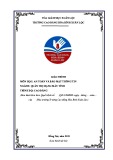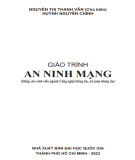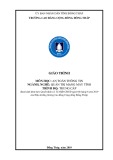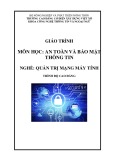
VNU Journal of Economics and Business, Vol. 4, No. 6 (2024) 104-114
104
Original Article
Factors influencing social media addiction among
Vietnamese adolescents
Vu Thi Thuy Hang, Nguyen Thi Van*
Thuongmai University
No. 79, Ho Tung Mau Street, Cau Giay District, Hanoi, Vietnam
Received: October 30, 2024
Revised: December 04, 2024; Accepted: December 25, 2024
Abstract: Social media is integral to modern life, particularly for adolescents who spend
considerable time online. However, excessive use poses significant risks to well-being, especially
among adolescents who are vulnerable to compulsive social media usage. This study examines
factors contributing to social media addiction among Vietnamese adolescents using the Bergen
Social Media Addiction Scale (BSMAS) and the Online Fear of Missing Out Inventory (On-FoMO).
A cross-sectional study was conducted in Vietnam with participants aged 13 to under 18. Snowball
sampling was used to ensure a diverse participant pool. The study excluded individuals with
diagnosed mood disorders to maintain population homogeneity. BSMAS, On-FoMO, demographic
data, and informed consent were collected via an online survey. The study found a high prevalence
of social media addiction among Vietnamese adolescents, with females being more susceptible than
males. Vietnamese adolescents struggled to reduce social media usage and felt distressed when
restricted. They did not necessarily feel envious or sad when seeing others' happiness online, nor did
they seek validation through likes or comments. However, Vietnamese adolescents reported
forgetting problems or being late due to SM use. The study results indicate that improving 17
emotional intelligence scales may reduce the extent of SMA among Vietnamese adolescents. The
study results also suggest that interventions for social media addiction need to be developed in
different fields.
Keywords: Social media addiction, BSMAS, On-FoMO, Vietnamese adolescents.
1. Introduction*
Using social media (SM) on smartphones is
gaining popularity. Despite many advantages,
excessive SM usage is becoming more widely
acknowledged as a concern, if not an illness. As
of January 2024, 5.35 billion people were using
________
* Corresponding author
E-mail address: vannguyen@tmu.edu.vn
https://doi.org/10.57110/vnu-jeb.v4i6.354
Copyright © 2024 The author(s)
Licensing: This article is published under a CC BY-NC
4.0 license.
the internet worldwide, with 62.3% being SM
users. Asia had the highest number of online
users, with over 2.93 billion, followed by
Europe, with around 750 million users. In 2022,
persons in the 15 to 24 age group used the
internet most often worldwide (98%), and 75%
of people globally fall into the 15–24 age range
Licensing: This article is published under a CC BY-NC
4.0 license.
VNU Journal of Economics and Business
Journal homepage: https://jeb.ueb.edu.vn

V.T.T. Hang, N.T. Van / VNU Journal of Economics and Business, Vol. 4, No. 6 (2024) 104-114
105
on average (Statista, 2024). In Vietnam, internet
users are expected to rise by 13.1 million
(15.04%) from 2024 to 2029. According to
several earlier studies examining the prevalence
of internet addiction among young Vietnamese
adults, 21.5% of participants had an internet
addiction. Individuals with an internet addiction
were also more likely to struggle with everyday
tasks like self-care or to experience mental
health issues like anxiety or depression (Tran et
al., 2017). Adolescence is a crucial
developmental phase that marks the transition
from childhood to adulthood. This stage often
involves risk-taking and impulsivity, which
influence emotions, decision-making, and
interactions. These traits, combined with limited
self-control and a lack of parental guidance, may
make adolescents more prone to excessive SM use.
Previous studies on On-FoMO and
BSMAS have provided insights into the effects
of On-FoMO and SMA. Previous studies have
focused on the relationship between On-FoMO
and SMA across different age groups. Most
studies using On-FoMO and BSMAS have
focused on adolescents or young adults, but
few have considered age-specific differences
in the relationship between On-FoMO and
SMA. Previous studies have not clarified the
cultural factors that influence On-FoMO and
SMA. Most previous studies have focused on
European countries or developed regions,
where On-FoMO and the effects of SM may
manifest differently compared to Asian
countries such as Vietnam, where cultural and
social factors play an essential role in SM use
behaviour (Cheng et al., 2021; Balcerowska et
al., 2022; Ciacchini et al., 2023). Cultural
factors may influence how On-FoMO and
SMA are expressed and perceived, so further
research in countries with different cultures is
needed to draw more generalizable
conclusions. Overall, the research on On-
FoMO and SMA has the potential for further
development and expansion, especially when
considering cultural factors and studying their
relationship with other psychological factors.
In Vietnam, the research on On-FoMO and
BSMAS has had some notable results, but there
are still some gaps. Most studies in Vietnam
focus on the level of SM use or the impact of SM
on mental health. Still, few studies specifically
examine the concept of On-FoMO and the level
of SMA, especially when using specialized
scales such as On-FoMO and BSMAS. Domestic
studies have not yet analyzed in detail the
relationship between On-FoMO and SMA in
adolescents and young adults (Doan et al., 2022;
Dam et al., 2023). In the context of Vietnamese
society, culture and community relations can
have a significant impact on how young people
experience SM. A better understanding of these
factors will help to design culturally appropriate
interventions. Combining both scales will allow
for a complete analysis of how On-FoMO
promotes SMA, providing specific data to
identify more accurate predictors of addictive
behaviour.
This study is structured into five sections to
address some of the above gaps. The next section
of the paper will present the theoretical
background and methods. The results and
discussion section will present and clarify the
main findings related to the relationship between
On-FoMO factors and the level of SMA. The
conclusion section will have policy implications
and suggest future research directions.
2. Theoretical background
2.1. Theoretical framework of addictions and
social media
According to the United Nations, the
transitory stage between childhood and maturity,
known as adolescence, is marked by many
changes in the body, mind, behaviour, emotions,
and society. Negative experiences during early
childhood, low self-esteem, and exposure to low
or high stimulations can cause individuals to
experience negative feelings. The theoretical
position is that when engaging in addictive
behaviour, individuals may experience a set of
dissociative-like experiences that differentiate
them from non-addicts (Jacobs, 1988). As a
result, people turn to addictive behaviours to
numb these unpleasant feelings and maintain
equilibrium (Han, 2019; Cho, 2021).
The scientific community has long debated
the legitimacy of the term “behavioural”
addictions and their existence. Since the mid-
1990s, research on excessive internet use has led
to the concept of “addiction to technology”
(Griffiths, 2005). Terms such as SMA,
problematic SM use, and compulsive SM use are
used interchangeably to refer to the phenomenon
of maladaptive SM use characterized by either
addiction-like symptoms or reduced self-
regulation (Bányai et al., 2017).

V.T.T. Hang, N.T. Van / VNU Journal of Economics and Business, Vol. 4, No. 6 (2024) 104-114
106
However, due to the historical association
between the term “addiction” and substance use
disorders, some researchers are concerned that
the term SMA may diminish the seriousness of
traditional psychiatric disorders and that it is
premature to consider the problem as a
pathology (Carbonell & Panova, 2017). In
keeping with the majority of the literature, the
study uses the term SMA, or addictive SM use
(in the nonclinical sense), throughout the
remainder of the study. SMA is a state where
users cannot control their SA usage behaviour
despite the negative impacts on work, study, and
social relationships. SMA is a maladaptive
psychological dependence on SNSs to the point
where behavioural addiction symptoms occur
(Cao et al., 2020). For the study, addictive SM
use is excessive interest in SM, strong
motivation, and spending a lot of time and
energy using SM to the point where an
individual's social activities, interpersonal
relationships, school/work, and health and well-
being are impaired. Teenagers and young adults
are the most susceptible age group among SM
users. They spend the most time online, making
them the most susceptible to the underlying
hazards associated with SM. Young people who
overuse SM may experience adverse effects such
as sleep disturbance, reduced attention span,
negative self-image, and cyberbullying.
2.3. Research models and methodologies
This study used the BSMAS and On-FoMO
scales to collect comprehensive SM user
behaviour data. The BSMAS measures SMA,
while On-FoMO measures online fear of missing
out. This combination allows the study to not
only determine the level of addiction but also
better understand the factors that drive SM use.
BSMAS includes frequency, necessity, control,
and adverse effects. The study uses the BSMAS
scale to determine whether users have
manifestations of SMA and to what extent. On-
FoMO helps measure the fear of being unable to
keep up with information, pressure from online
feedback, and the impact of the feeling of
missing out on the user's psychological state and
social behaviour (Przybylski et al., 2013). By
analyzing both the level of addiction and the
feeling of missing out, the study can not only
determine the level of dependence on SM but
also gain a deeper understanding of why users
continue to use it despite knowing that they may
experience adverse effects. These factors are the main
motivations that make users susceptible to addiction
(Elhai et al., 2020). From there, the study draws more
accurate conclusions about the experience of SM
users, helping to provide a theoretical basis for
interventions and support measures.
Figure 1. The research model
Source: Authors.
The research model is illustrated in Figure 1,
showing SMA in the center with influencing
factors from both the BSMAS and On-FoMO
scales on either side. BSMAS factors include
withdrawal, conflict, salience, mood
modification, tolerance, and relapse, while On-
FoMO factors encompass need to belong, need
for popularity, anxiety, and addiction. This
model visually represents the dual influence of
these psychological and behavioural factors on
SMA, emphasizing their role in sustaining user
engagement on social platforms.

V.T.T. Hang, N.T. Van / VNU Journal of Economics and Business, Vol. 4, No. 6 (2024) 104-114
107
2.3.1. Bergen Social Media Addiction Scale
(BSMAS)
BSMAS is one of the most commonly used
questionnaires for assessing SMA (Lin et al.,
2017). The first version of BSMAS was the
Bergen Facebook Addiction Scale (BFAS). The
primary purpose of the initial BFAS was to look
at SMA, which was unique to Facebook. Then,
to keep up with the growing number of social
network sites and incorporate platform-specific
evaluation, the original BFAS was changed and
renamed BSMAS.
Several psychometric instruments have been
used to assess problematic forms of internet use,
such as the Generalized Problematic Internet
Use Scale-2 (GPIUS2) (Casale & Fioravanti,
2017), SM Disorder Scale (SMDS) (van den
Eijnden et al., 2016), BSMAS (C. S. Andreassen
et al., 2016). Despite such variations in the
psychometric assessment of the SMA, the
BSMAS was used in the current study for three
compelling reasons. First, the BSMAS is
theoretically motivated and based on the
component model of addiction (Griffiths, 2005),
which posits that there are six core dimensions
of addiction. Second, the BSMAS uses ordered
multivariate items and is therefore able to
capture a wide range of variation in the SMA.
Third, the BSMAS has been adapted, validated,
and used in international samples where the
BSMAS has demonstrated good psychometric
properties (Bányai et al., 2017). BSMAS is a
scale to assess the level of SMA in individuals
based on six key aspects of behavioural
addiction. The six central components are
withdrawal, conflict, salience, mood
modification, tolerance, and relapse (C. S.
Andreassen et al., 2016). Withdrawal is when
not using SM, the individual feels uncomfortable
or anxious. Conflict is when SM use interferes
with daily activities or causes conflict with loved
ones. Salience is when the individual spends a lot
of time and thoughts on SM, considering it an
important activity in life. Mood modification
shows that SM is aimed at achieving a sense of
comfort or as a way to relieve stress. Tolerance
is when the individual needs to spend more time
on SM to accomplish the same feeling of
comfort as before. Relapse is when the
individual has tried to reduce the time spent on
SM but has not succeeded.
2.3.2. Online Fear of Missing Out Inventory
(On-FoMO)
Online environments increasingly mediate
social interactions. The FoMO, or the need to
always be aware of what other people are doing,
is one of the possible causes of this (Przybylski
et al., 2013). Even though FoMO is not strictly
related to online activities, FoMO leads to SM.
First, it is positively reinforcing when SM fulfils
social and esteem demands. Popularity and self-
esteem may contribute to FoMO as it is
negatively associated with the latter. The Online
Fear of Missing Out (On-FoMO) Inventory was
developed as FoMO appears to be related to SM
use (Sette et al., 2020). Regarding FoMO, there
are four aspects to consider: 1. The need to
belong, which refers to the desire to be part of a
group (Przybylski et al., 2013); 2. The need for
popularity involves seeking approval from
others and having high self-esteem (Riordan et
al., 2020), (Sette et al., 2020); 3. Anxiety refers
to the emotional distress experienced when
access to SM is blocked or impossible (Beyens
et al., 2016); and 4. Addiction refers to the
excessive use of SM at a level that interferes with
daily activities, such as sleeping, eating, and
fulfilling work or school responsibilities (Sette et
al., 2020). SM use appears to be increasing daily
worldwide. Using the four-factor On-FoMO
Inventory in studies on FoMO in Vietnam will
ensure that FoMO is addressed across all its
dimensions. Individuals experience FoMO while
constantly following others online.
3. Methods
3.1. Developing the questionnaire
The questionnaire was developed to measure
the level of SMA and psychological and social
factors affecting participants' SM use behaviour,
focusing on Vietnamese adolescents. The
questionnaire consists of 12 questions divided
into five parts. Part 1 is demographic
information (age, gender, occupation, current
location, currently living with). Part 2 is the level
of SM use (quantity, frequency, type, purpose).
Part 3 measures the level of SMA using the
BSMAS scale. Part 4 measures the fear of
missing out through the On-FoMO scale. Part 5
is informed consent for participating in the
research, acknowledging that the Vietnamese
adolescent or dependent participant voluntarily
agreed to participate and provide information for
this study. The goals and prerequisites of the

V.T.T. Hang, N.T. Van / VNU Journal of Economics and Business, Vol. 4, No. 6 (2024) 104-114
108
study were explained. Participants may only
complete the survey questions if they consent to
participate by signing the Informed Consent
Form. The research has ensured general
guidance in Chapter 2 of Guidelines Vietnam
Ministry of Health's Evaluation Committee on
Ethical Issues in Biomedical Research,
specifically the dissemination of consent forms
to participate in research, the dissemination of
risks and benefits, the assurance of privacy and
security, payment and compensation to research
subjects (if any), and ending or stopping the
study. The BSMAS questionnaire consists of six
items that evaluate the frequency of SM usage.
Participants respond using a five-point Likert
scale ranging from (1) very rarely to (5) very
often (Griffiths, 2005). A higher score on the
BSMAS suggests a greater likelihood of being at
risk of developing SMA. The On-FoMO scale
uses a four-point Likert scale, with options
ranging from 1 (need to belong) to 4 (addiction)
(Sette et al., 2020). A pilot test with the
participation of 20 adolescents and experts was
conducted. The purpose of this pilot survey was to
examine the appropriateness of the scales and to
find out opinions on editing and supplementing the
scales for each factor to ensure the appropriateness
to the research context of Vietnamese adolescents.
After that, the questionnaire was adjusted and put
into the actual survey.
3.2. Data collection
An online cross-sectional study was
conducted in Vietnam from December 2023 to
January 20241. The inclusion criteria for being
a participant were (1) being aged 13 years to
under 18 years and currently residing in
Vietnam (based on Civil Law No.
91/2015/QH13 and regulations of the majority
SM platforms) (Vietnam National Assembly,
2015); (2) using at least one SM; and (3) access
to the internet was required for participation in
the study. Individuals with diagnosed mood
disorders were excluded to ensure the
homogeneity of the studied population.
Participants were prompted to submit their
email addresses and cellphone numbers to
ensure that no one completed the poll more than
once. Notwithstanding the request for personal
information, anonymity and confidentiality
were guaranteed to the participants in the
current study. The authors employed the
________
1 https://forms.gle/gZnMW5hyg4xFFPeY9
formula for estimating a population mean to
determine the sample size for this study. This
sample size is calculated according to the
sample calculation formula proposed by
Yamane (1973). Following this process, a total
of 632 Vietnamese adolescents agreed to
participate. From the time of response, 42 did
not use SM, and 590 used SM at least once.
3.3. Data analysis
The two instruments in question use another
Likert-type scale, which means that categorical
data analysis was necessary without assuming a
normal distribution. Therefore, the confirmatory
factor analysis (CFA) estimator and the
corrected item-total correlation were used. The
research chooses CFA to analyze the data based
on some previous studies (Monacis et al., 2017;
Doan et al., 2022). Accordingly, CFA analysis is
suitable for studies that inherit the entire
available scale from previous studies. CFA is
applied to assess the validity of the structure. We
combine CFA and analyze Cronbach's Alpha
reliability, variance, standard deviation,
Skewness, and Kurtosis to evaluate the standard
error of measurement and the coefficient of
determination of the factors. The following
criteria were used to determine the goodness of
fit: a comparative fit index (CFI) > 0.9, a Tucker-
Lewis index (TLI) > 0.9, a root mean square
error of approximation (RMSEA) < 0.08, Chi-
square/df (CMIN/df) ≤ 3, Goodness of Fit index
(GFI) ≥ 0.9, and a standardized root mean square
residual (SRMR) < 0.08 (Hu & Bentler, 1999),
(Cook et al., 2009). Both descriptive and
analytical statistics were used by SPSS version
22 and Amos version 29.
4. Results and discussion
4.1. Descriptive characteristics
Table 1 shows the demographic
characteristics of 590 participants, mainly high
school pupils aged 16 to under 18. They mostly
live in urban areas with their families and use
two or more SMs. The survey encompassed 590
respondents, categorized by urban, suburban,
and rural or mountainous areas. In the Red River
Delta region, 182 participants were recorded,
including 92 from urban areas primarily located
in Hanoi and Hai Phong, 51 from suburban





![Tài liệu tập huấn nâng cao nhận thức về an toàn thông tin mạng cho cán bộ cơ sở [Mới nhất]](https://cdn.tailieu.vn/images/document/thumbnail/2023/20230307/bapnuong06/135x160/991678178243.jpg)














![Đề thi cuối kì Nhập môn Mạng máy tính: Tổng hợp [Năm]](https://cdn.tailieu.vn/images/document/thumbnail/2025/20251110/nminhthoi53@gmail.com/135x160/38281762757217.jpg)



![Đề thi học kì 2 môn Nhập môn Mạng máy tính [kèm đáp án]](https://cdn.tailieu.vn/images/document/thumbnail/2025/20251014/lakim0906/135x160/23811760416180.jpg)

